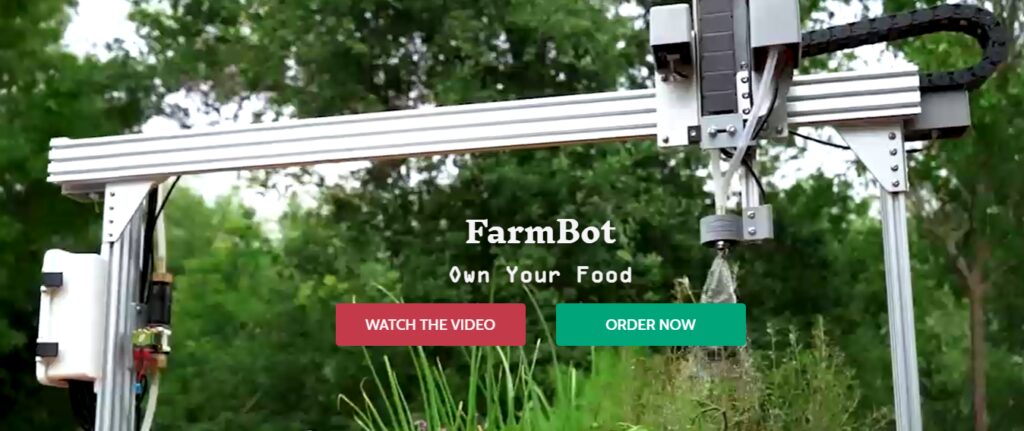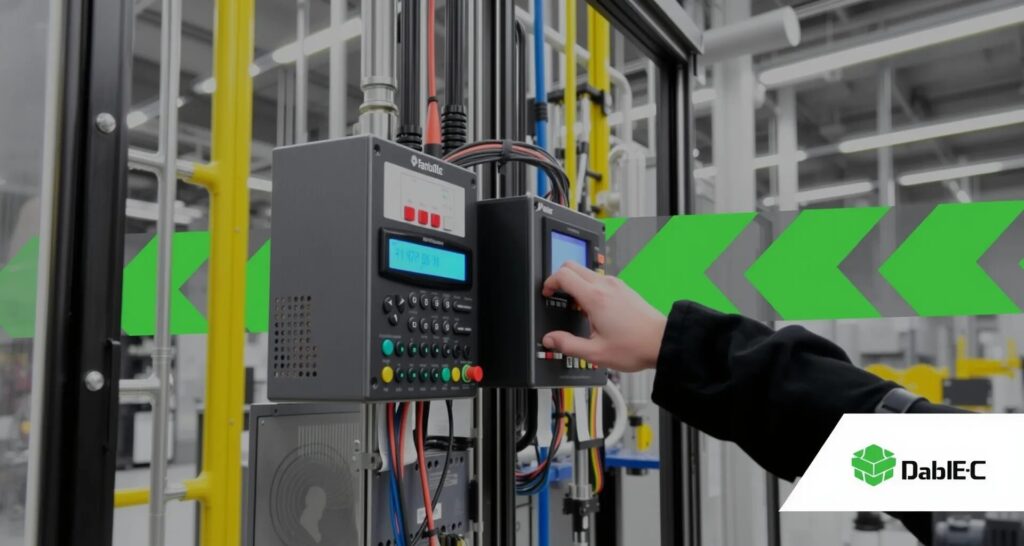
FarmBot is truly an innovative project that brings together robotics and precision agriculture to automate small-scale farming. This article dives into the many facets of FarmBot and explores how it’s changing the landscape of modern agriculture.
What is FarmBot?
FarmBot is an open-source platform designed for automated farming. Its open-source nature allows anyone to access, modify, and enhance the system according to their specific needs. This community-driven approach not only encourages innovation but also ensures that FarmBot remains adaptable and relevant across different contexts.
The system’s modular design enables users to tailor their setup to the size and requirements of their garden. This flexibility is a game-changer, making FarmBot suitable for everything from a small backyard garden to larger educational or commercial farms.
Core Components of FarmBot
Hardware
At the heart of FarmBot is a gantry system that moves across a raised bed garden. This system is equipped with tools that handle tasks like planting seeds, watering plants, and monitoring soil conditions. The hardware is designed to be highly precise, ensuring that each seed is placed at the optimal depth and location to maximize space and enhance plant growth.
Software
FarmBot is controlled through an intuitive web-based interface. Users can easily plan their garden, schedule tasks, and monitor plant health. The software’s ability to integrate with weather data, soil sensors, and other inputs allows for automatic optimization of watering and other processes, making farming more efficient.
Robotics
The robotic aspect of FarmBot is what sets it apart. Automated movements take care of planting, watering, and even weeding, ensuring that every task is performed with precision. This automation reduces the need for manual labor and minimizes human error, leading to healthier plants and higher yields.
Real-World Applications
Home Gardens
For home gardeners, FarmBot offers a simple and efficient way to grow food with minimal manual work. Its precision and automation are particularly beneficial in urban settings, where space is often limited. With FarmBot, even small gardens can produce a significant yield, making it a valuable tool for city dwellers.
Educational Settings
In schools and universities, FarmBot serves as a hands-on educational tool. Students can learn about robotics, agriculture, and sustainability while experimenting with the system’s open-source code. This fosters innovation and provides a practical understanding of how technology can be applied to real-world challenges.

Small-Scale Commercial Farms
For small-scale farmers, especially those focused on organic or niche crops, FarmBot can automate labor-intensive tasks, cutting costs and increasing efficiency. This is particularly valuable in regions where labor is scarce or where sustainable farming practices are prioritized.
FarmBot’s versatility extends far beyond home gardens, educational settings, and small-scale commercial farms. Its ability to adapt to various environments and needs makes it a powerful tool in multiple contexts. Let’s dive into some additional real-world applications where FarmBot is making a significant impact.
Community Gardens
In urban areas, community gardens are becoming increasingly popular as a way to bring people together and promote local food production. FarmBot can be a valuable asset in these settings by automating routine tasks like planting, watering, and weeding. This allows community members to focus on other aspects of gardening, such as learning, socializing, and enjoying the fruits of their labor. Additionally, FarmBot’s precision can help maximize yield in these often limited spaces, ensuring that the community garden can support as many people as possible.
Research and Development
Agricultural research often requires precise control over growing conditions to test different variables such as soil composition, watering schedules, and plant varieties. FarmBot’s modular and customizable design makes it an ideal tool for researchers looking to automate and standardize these experiments. By using FarmBot, researchers can ensure consistent and accurate results, leading to more reliable data and faster innovation in agricultural practices.
Disaster Relief and Food Security
In areas affected by natural disasters or conflicts, food security is a major concern. Deploying FarmBot systems in such regions can provide a sustainable way to grow food quickly and efficiently, even in challenging conditions. Because FarmBot is open-source and modular, it can be adapted to suit different environments, whether it’s a temporary setup in a disaster zone or a more permanent installation in a refugee camp. The ability to automate food production in these areas can be crucial in supporting vulnerable populations.
Remote and Rural Farming
In remote or rural areas where access to labor and resources is limited, FarmBot can play a crucial role in maintaining food production. Its ability to operate autonomously reduces the need for constant human intervention, making it possible to manage a farm from a distance. This can be particularly beneficial in areas where farmers must travel long distances to reach their land, or where harsh weather conditions make regular farm visits difficult. By integrating FarmBot with remote monitoring systems, farmers can keep track of their crops from anywhere, ensuring timely interventions when needed.
Urban Rooftop Gardens
With urbanization on the rise, rooftop gardens are becoming an innovative solution for growing food in cities. FarmBot’s compact design makes it an excellent fit for these urban farms. By automating the growing process, FarmBot can help maximize the productivity of these rooftop spaces, turning them into efficient food production units. This not only contributes to urban food security but also helps reduce the carbon footprint associated with transporting food into cities.
Vertical Farming
As the demand for fresh produce in urban areas grows, vertical farming is gaining traction as a way to produce food in a controlled, space-efficient manner. FarmBot can be integrated into vertical farming setups, automating the planting, watering, and maintenance of crops stacked in multiple layers. This integration can enhance the efficiency and scalability of vertical farms, making them a viable solution for meeting the food needs of growing urban populations.
Therapeutic and Rehabilitation Programs
Gardening has long been recognized as a therapeutic activity that can support mental health and physical rehabilitation. FarmBot can be incorporated into therapy gardens where patients are encouraged to engage with nature as part of their treatment. The automation provided by FarmBot ensures that the garden is well-maintained with minimal effort, allowing patients to focus on the healing aspects of gardening without the physical strain of labor-intensive tasks.
Hobbyist and DIY Enthusiasts
For hobbyists and DIY enthusiasts, FarmBot offers an exciting project that combines technology and agriculture. Its open-source nature invites tinkering and customization, allowing users to experiment with new tools, software modifications, or even entirely new applications. This not only makes gardening more engaging for tech-savvy individuals but also fosters a deeper understanding of both robotics and sustainable farming practices.
Greenhouses
In controlled environments like greenhouses, FarmBot can further optimize growing conditions by precisely managing watering, planting, and other tasks. Greenhouse operators can use FarmBot to automate the cultivation of high-value crops, ensuring consistent quality and yield. By integrating with climate control systems, FarmBot can help maintain ideal conditions for plant growth, even as external weather conditions fluctuate.
Corporate and Institutional Sustainability Initiatives
As more corporations and institutions embrace sustainability, FarmBot can be integrated into corporate campuses or institutional grounds as part of green initiatives. These organizations can use FarmBot to grow food for employee cafeterias, reduce their environmental impact, and demonstrate their commitment to sustainability. Moreover, the presence of an automated garden can serve as an educational tool, inspiring employees and visitors to adopt more sustainable practices in their own lives.
Conclusion: A Tool for Every Farmer and Gardener
FarmBot’s flexibility and automation make it a versatile tool that can be applied in a wide range of settings, from urban rooftops to rural farms and disaster relief zones. Whether used by community gardeners, researchers, or corporations, FarmBot has the potential to transform the way we approach sustainable agriculture and food production.
As the FarmBot community continues to grow and innovate, the possibilities for new applications will only expand, solidifying FarmBot’s role as a key player in the future of farming.
Sustainability and Efficiency
Water Conservation
FarmBot’s precision watering system ensures that water is delivered directly to the plant roots, reducing waste and promoting efficient water use. This is crucial in areas where water is scarce or where conservation is a priority.
Pesticide Reduction
With integrated sensors and monitoring systems, FarmBot can reduce the need for chemical inputs like pesticides. By detecting issues early and responding precisely, the system helps produce healthier crops while supporting more sustainable farming practices.
Energy Use
FarmBot’s energy requirements are relatively low, and it can be powered by renewable energy sources like solar panels. This makes it an environmentally friendly option for those looking to minimize their carbon footprint.
Community and Collaboration
Global Community
The open-source nature of FarmBot has fostered a global community of users, developers, and enthusiasts. This community is constantly sharing tips, modifications, and improvements, ensuring that FarmBot continues to evolve.
Collaborative Development
Universities, research institutions, and individual developers are all contributing to FarmBot’s development. This collaborative approach keeps the technology at the forefront of agricultural innovation and ensures it remains relevant in a rapidly changing world.
Challenges and Considerations
Initial Costs
One of the primary challenges of adopting FarmBot is the initial investment. While the system offers significant long-term savings and efficiency gains, the upfront cost can be a barrier, especially for small-scale users.
Technical Knowledge
Operating and maintaining a FarmBot requires a certain level of technical expertise. This could be a barrier for some users, but the extensive community support and comprehensive documentation available online help mitigate this challenge.
Scalability
FarmBot is ideal for small-scale applications, but scaling it up to larger farms presents challenges. Managing larger areas and integrating FarmBot with other farm management systems requires further innovation and development.
Looking Ahead: The Future of FarmBot
Integration with IoT and AI
Future versions of FarmBot may integrate more advanced IoT devices and AI algorithms to further enhance its capabilities. For example, AI could be used for predictive analytics, helping farmers make data-driven decisions to optimize crop yields.
Expansion to New Crops and Environments
As the technology evolves, FarmBot could be adapted to work with a wider variety of crops and in more challenging environments, such as arid regions or vertical farming setups.
Community-Driven Innovation
The ongoing contributions from the global community will likely lead to new features, improvements, and adaptations, ensuring that FarmBot remains a leader in the field of precision agriculture.
Conclusion: A Revolution in Small-Scale Farming
FarmBot is more than just a tool; it’s a revolutionary approach to precision agriculture that combines automation, sustainability, and community-driven innovation. Whether you’re a home gardener, an educator, or a small-scale farmer, FarmBot offers a scalable, customizable, and sustainable solution for growing food.
As technology continues to advance and the global community of FarmBot users expands, the future of automated farming looks brighter than ever.
Resources
Here are some valuable resources to explore if you want to learn more about FarmBot, its applications, and the broader field of precision agriculture:
- FarmBot Official Website:
- The official site provides comprehensive information about FarmBot, including product details, software, and hardware documentation, community forums, and educational resources.
- FarmBot Official Website
- FarmBot Open-Source Documentation:
- Detailed technical documentation on how to build, operate, and modify a FarmBot system. This resource is essential for those interested in DIY projects or custom installations.
- FarmBot Documentation
- FarmBot Community Forum:
- Join the global community of FarmBot users to discuss tips, share modifications, and collaborate on new ideas. This forum is a great place to connect with others who are passionate about sustainable agriculture and robotics.
- FarmBot Forum
- Precision Agriculture Resources:
- Learn more about precision agriculture, the broader field in which FarmBot operates, through research papers, articles, and case studies.
- Precision Agriculture Resources
- YouTube – FarmBot Tutorials and Demonstrations:
- Watch tutorials and demonstrations on how to set up and use FarmBot, as well as innovative projects and modifications made by the community.
- FarmBot on YouTube
- GitHub – FarmBot Repository:
- Access the source code for FarmBot’s software and hardware designs. This resource is invaluable for developers and engineers looking to contribute to or customize FarmBot.
- FarmBot GitHub Repository
- Sustainable Agriculture and Robotics Journals:
- For those interested in academic research, journals such as “Agricultural Systems” and “Precision Agriculture” offer in-depth studies and the latest advancements in the field.
- Agricultural Systems Journal
- Precision Agriculture Journal
- Local Maker Spaces and DIY Workshops:
- Engage with local communities to collaborate on FarmBot builds, modifications, and other agricultural automation projects. Maker spaces often host workshops and events that can help you get hands-on experience.
- Search for local maker spaces or DIY workshops in your area.
- Educational Institutions and Online Courses:
- Many universities and online platforms offer courses on robotics, precision agriculture, and sustainable farming. Consider enrolling in these courses to deepen your understanding and skills.
- Platforms like Coursera, edX, and FutureLearn offer relevant courses.
- Coursera Agriculture Courses





